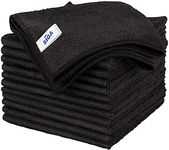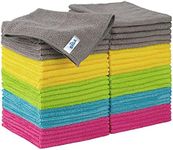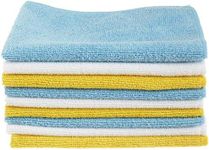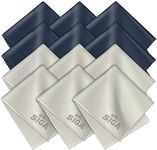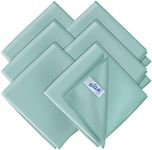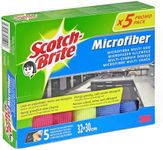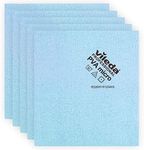Buying Guide for the Best Microfiber Cloths
Microfiber cloths are versatile cleaning tools that can be used for a variety of tasks, from wiping down surfaces to cleaning delicate items. When choosing the right microfiber cloth, it's important to consider several key specifications to ensure you get the best fit for your needs. Understanding these specs will help you make an informed decision and select a cloth that performs well for your intended use.Material QualityMaterial quality refers to the composition and density of the microfiber cloth. High-quality microfiber cloths are made from a blend of polyester and polyamide, which provides excellent absorbency and durability. The density of the fibers is measured in grams per square meter (GSM). Cloths with higher GSM (300-400 GSM) are thicker and more absorbent, making them ideal for heavy-duty cleaning tasks. Lower GSM cloths (200-300 GSM) are thinner and better suited for light cleaning and dusting. Choose a cloth with the appropriate GSM based on the type of cleaning you need to do.
Weave TypeThe weave type of a microfiber cloth affects its texture and cleaning performance. Common weave types include terry, waffle, and suede. Terry weave cloths have a plush, looped texture that is great for general cleaning and scrubbing. Waffle weave cloths have a textured pattern that enhances absorbency and is ideal for drying surfaces. Suede weave cloths are smooth and gentle, making them perfect for cleaning delicate items like electronics and glass. Consider the surface you will be cleaning and choose a weave type that matches your needs.
SizeMicrofiber cloths come in various sizes, typically ranging from small (12x12 inches) to large (16x16 inches or bigger). The size you choose should depend on the cleaning task at hand. Smaller cloths are easier to handle and are great for detailed cleaning tasks, such as wiping down small surfaces or cleaning electronics. Larger cloths cover more area and are better suited for cleaning larger surfaces like countertops and windows. Select a size that is convenient for your specific cleaning needs.
Edge FinishThe edge finish of a microfiber cloth can impact its durability and performance. Common edge finishes include stitched, surged, and laser-cut edges. Stitched edges are reinforced with stitching, making them durable and less likely to fray. Surged edges are finished with a continuous overlock stitch, providing extra strength and durability. Laser-cut edges are smooth and seamless, reducing the risk of scratching delicate surfaces. Choose an edge finish that aligns with your cleaning requirements and the surfaces you will be cleaning.
ColorMicrofiber cloths come in a variety of colors, which can be useful for color-coding cleaning tasks. Using different colored cloths for different areas or types of cleaning can help prevent cross-contamination and ensure hygiene. For example, you might use blue cloths for general cleaning, yellow cloths for kitchen surfaces, and green cloths for bathroom cleaning. Select colors that help you organize and streamline your cleaning routine.
